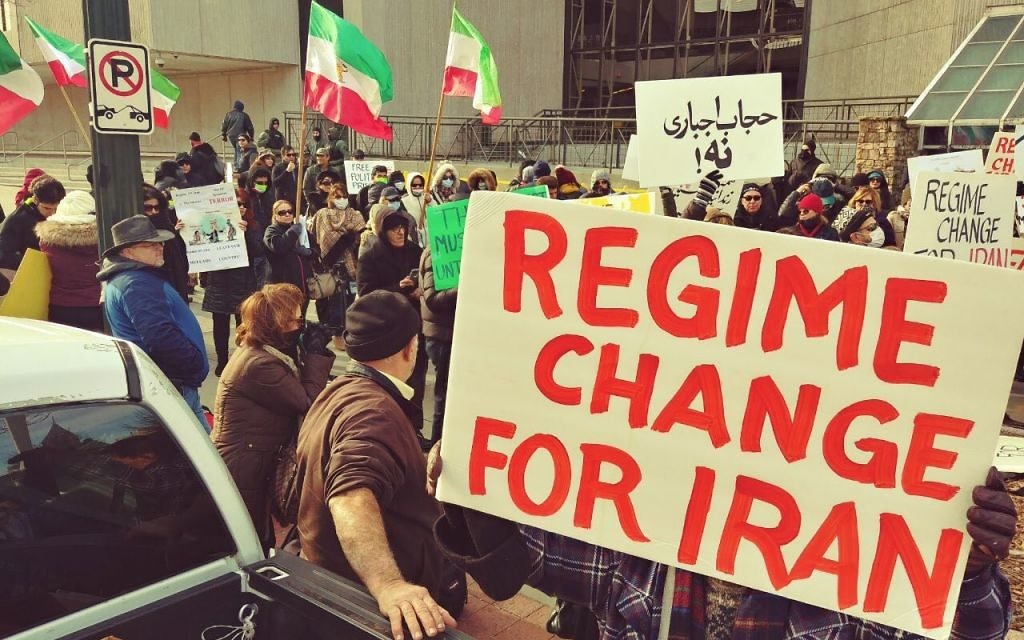Moosazadeh: A History of Iran’s Revolutions
The current protests echo previous uprisings but are different.

For many Iranians, the recent uprisings in Iran are a reminder of the religious fundamentalism, economic instability and oppression that have ruled Iran the past 40 years.
Yet Iranian demonstrations are an anomaly and often stem from different factors.
In 2009 the election of President Mahmoud Ahmadinejad evoked anger among countless Iranians. Thousands gathered around Azaddi Square (Freedom Square) to ask, “Where’s my vote?”
Get The AJT Newsletter by email and never miss our top stories Free Sign Up
It was not long, however before, the Iranian government unleashed the Iranian Revolutionary Guard Corps on the protesters, resulting in the death of Neda Agha-Soltan, who became a symbol for the Green Movement.
The past couple of years, money from the 2015 Iran nuclear deal, which should have trickled down to the Iranian people, has instead been used to fund Hezbollah, Hamas, and a series of military bases in Yemen and Syria to promote terrorism.
For years Iran’s Islamic regime has built multibillion-dollar charitable organizations run by religious clerics to support international terrorism while failing to spend on domestic problems that continue to plague the country.
As stated by New York Times columnist Bret Stephens, who is speaking at AIPAC’s annual Atlanta event Sunday, Jan. 28, the right way “of describing Iran’s dictatorship is a kleptotheocracy, driven by impulses that are by turns doctrinal and venal.”
Increasing prices for staples such as eggs, which rose from $8 to $14, recently led to a new wave of nonviolent protests in Iran.
In late December demonstrations spread across 80 cities, including Teheran, Mashhad, Isfahan and Kermanshah, as countless Iranians took to the streets to voice their frustration regarding President Hassan Rouhani’s reform policies and his government’s failure to provide economic stability.
President Donald Trump has announced his support for the Iranian protesters, a far cry from the Obama administration, which failed in 2009 to highlight the regime’s oppression of its own people.
Another noteworthy difference from 2009 is the chants from demonstrators, such as “Not Gaza, not Lebanon, my life for Iran.”
Such chants may indicate that Iranians are open to forging new international relationships and that they want the government’s focus on domestic issues.
Support from the United States is a step in the right direction; however, international recognition is also needed, mainly from European countries, which continue to conduct business with Iran amid disregard for human rights violations.
At least 21 people have been killed since December, and over 4,000 arrested, including 90 students.
Among the detainees, two have been killed in Iran’s notorious Evin prison, including Sina Ghanbari, 23 whose only crime was his participation in the protests. The death has further divided the Rouhani regime from Iranians who demand accountability.
Yet what’s needed now more than ever is for protesters in Iran to stick together if they are to topple the regime. Freedom is never won easily, but for the people of Iran it is long overdue.




comments